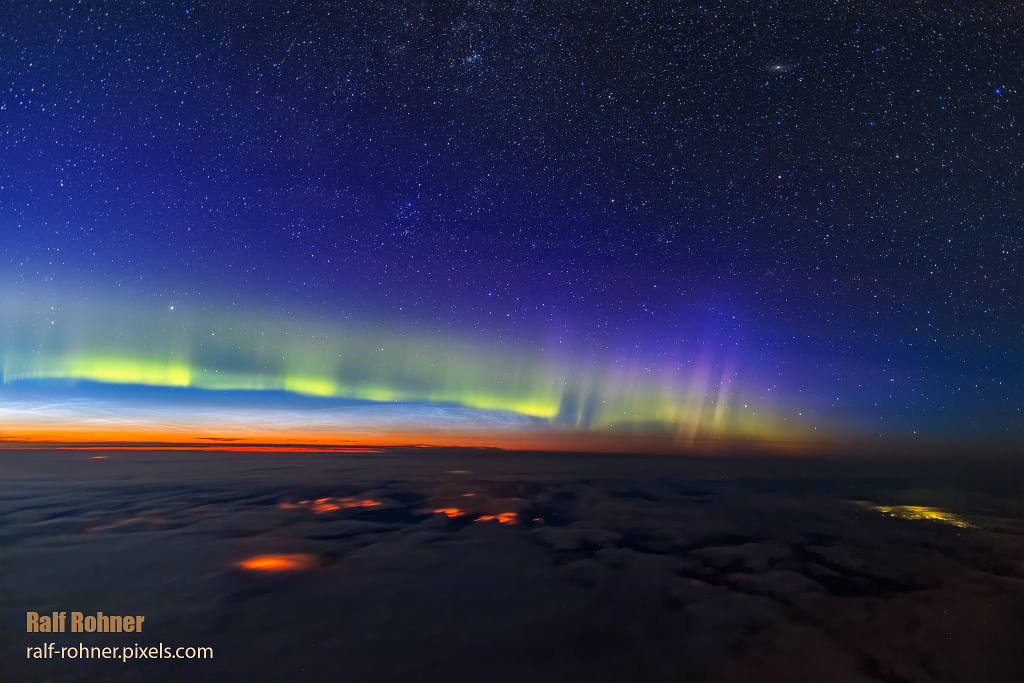2021年7月24日
The Edge of Space
Image Credit & Copyright: Ralf Rohner
Explanation: Where does space begin? For purposes of spaceflight some would say at the Karman line, currently defined as an altitude of 100 kilometers (60 miles). Others might place a line 80 kilometers (50 miles) above Earth’s mean sea level. But there is no sharp physical boundary that marks the end of atmosphere and the beginning of space. In fact, the Karman line itself is near the transition between the upper mesophere and lower thermosphere. Night shining or noctilucent clouds are high-latitude summer apparitions formed at altitudes near the top of the mesophere, up to 80 kilometers or so, also known as polar mesopheric clouds. Auroral bands of the northern (and southern) lights caused by energetic particles exciting atoms in the thermosphere can extend above 80 kilometers to over 600 kilometers altitude. Taken from a cockpit while flying at an altitude of 10 kilometers (33,000 feet) in the realm of stratospheric aeronautics, this snapshot captures both noctilucent clouds and aurora borealis under a starry sky, looking toward planet Earth’s horizon and the edge of space.
Tomorrow’s picture: crescent father and son
太空的边缘
影像提供与版权: Ralf Rohner
说明: 太空的起点在那?以进行太空飞航的意图来看,有人认为是100公里高空的卡门线。也有人会说:在地球平均海平面上空80公里之处。不论如何,并没有明确的物理边界,分隔大气的终点和太空的起点。例如卡门线,就位在较高的中气层和它下方的增温层之过渡区里。夏季高纬度地区的夜光云,出现在80公里高空的中气层顶缘附近,故亦称为极区中气层云。增温层原子受高能粒子激发所形成的北(南)极光带,延伸的范围可涵盖80公里到600多公里高空。这幅摄在10公里高平流航空层的机舱里,远眺地球地平线及太空边缘的影像,同时拍下了星空下方的夜光云及北极光。 (Karman line 卡门线; mesophere 中气层; thermosphere 增温层)
明日的图片: crescent father and son







